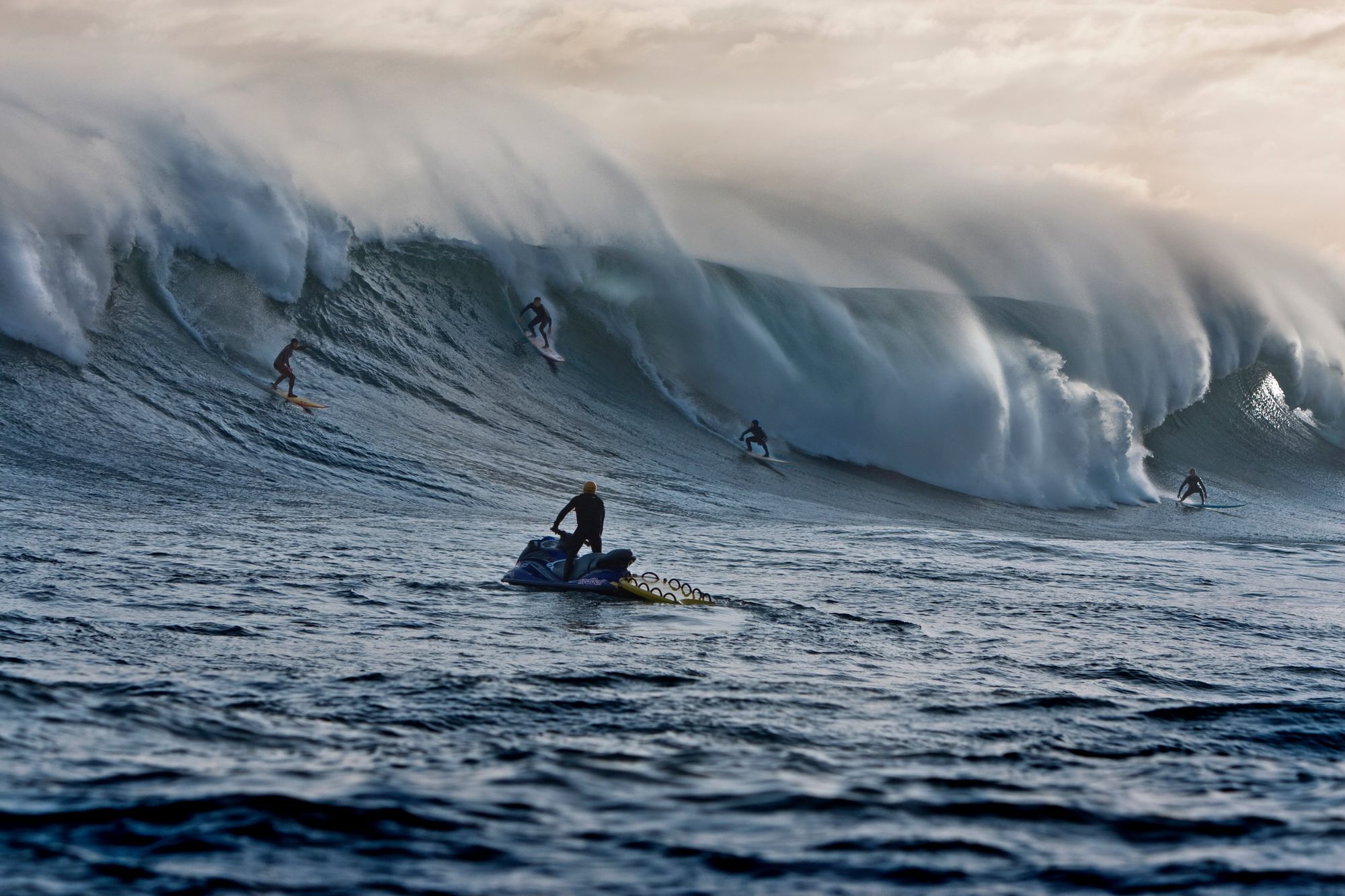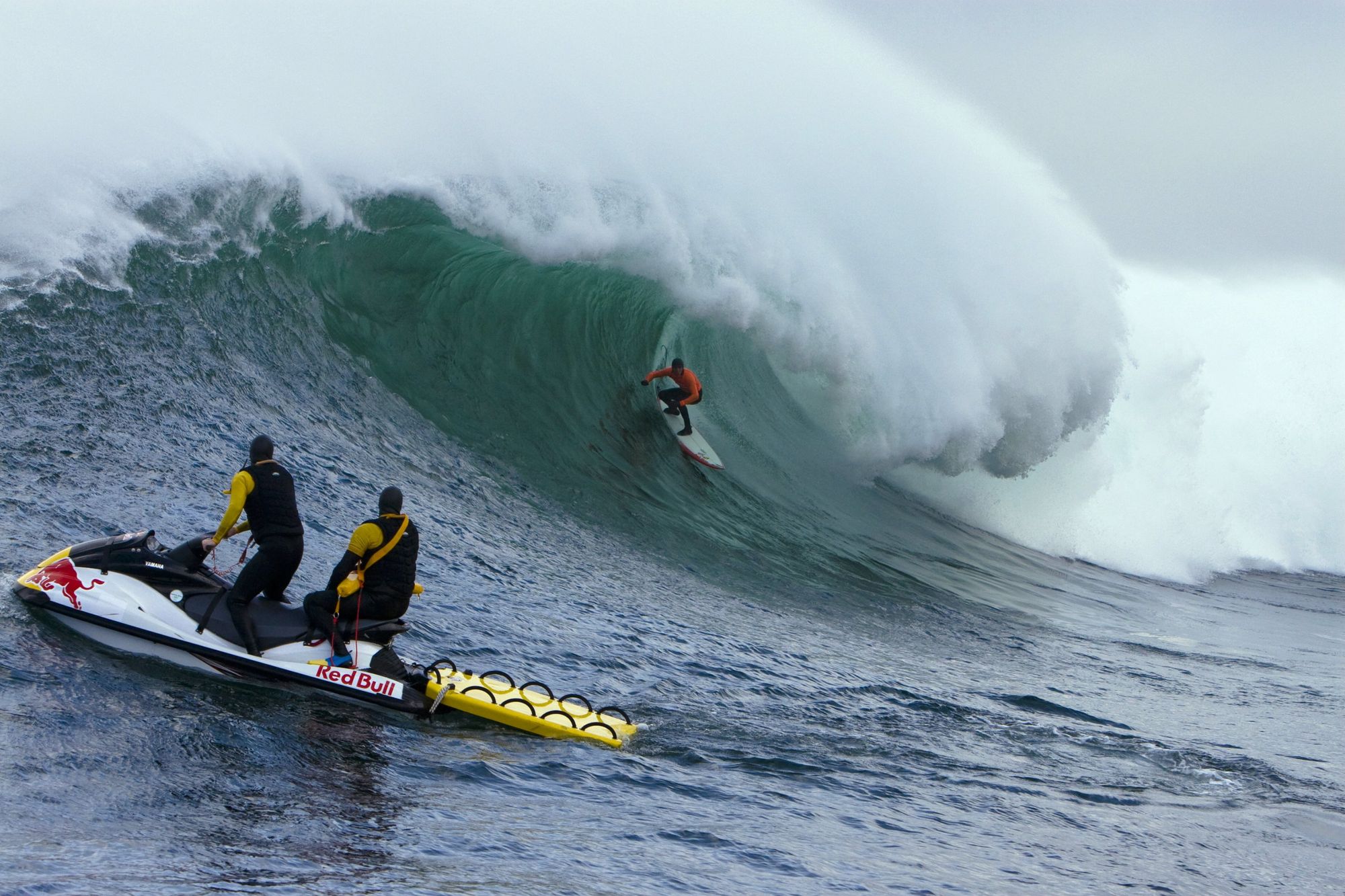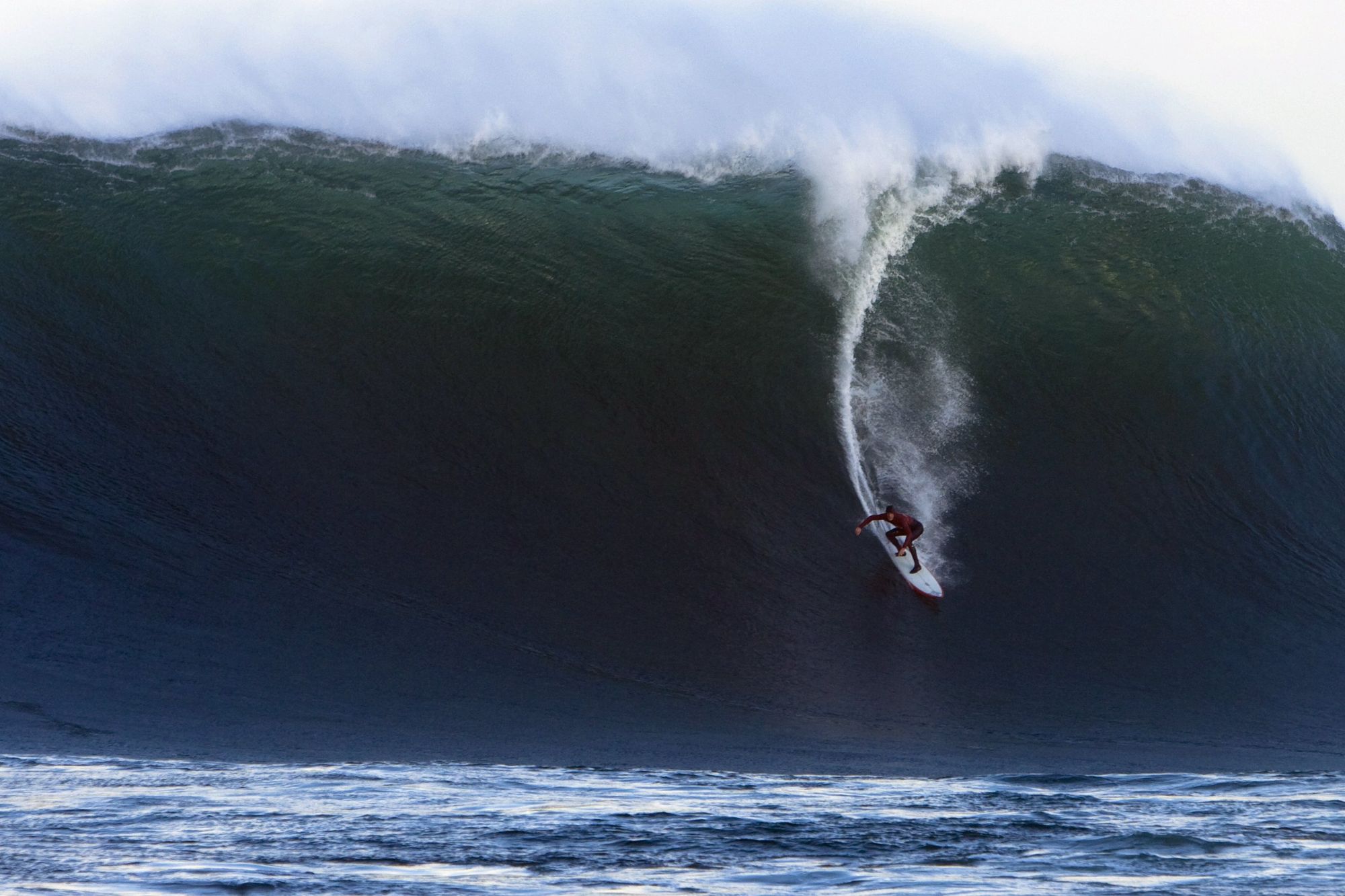The Red Bull Big wave Africa ran from the first tentative steps in 1999, up until the extravaganza that was the 2008 event, won by Grant 'Twiggy' Baker.
One of the years, I decided to surf this beast of a wave, to be able to report on it and understand more about facing big waves. Hawaiian big wave charger Jamie Sterling lent me one of his guns, and we all headed out there for a session. Jamie was a small guy back then, and in hindsight, I probably could have done with a bit more foam under my chest.



Most of the activity was happening way out the back, with some of the big wave surfers heading out to the outside peak to get a few of the big ones. I chose to sit closer in, on the edge of the channel, to have a look.
The sets weren't that big. It was about 12 to 15-foot, with a few bigger outside sets, but at Dungeons, that's not that big. It gets a whole lot bigger.
I remembered Davey Stolk, Rudy Palmboom, Jamie Sterling and Richard Sills getting a few, with Jamie having some fun out there and going left on a few of the sets. Going left can be extremely dangerous. If you go left and a big set comes through on the main section of reef, you are going to get them all on the head. If a big west set comes through, you're going to have to paddle hard to get out the way. Both options were scary, even on a lesser day such as this.
Jason Ribbink – another big wave surfer from Durban – caught a set wave and kicked out near where I was sitting. I waved at him.
"Nice wave," I said.
"Listen. You don't want to be sitting down here," Jason said to me. "This is a gnarly spot. If the inside section opens up, you're going to get caught inside. Rather come up to the top."
I wasn't interested in 'going to the top' and told him so, that I would rather chill down here, in what I thought was the channel.
He tried a few more times to entice me before paddling off.
I sat a bit longer, and unbeknownst to me, I was drifting while watching these guys ride massive waves. On cue, everyone in the photography boat started shouting. At me, at the ocean, at life in general. I started paddling, rattled by the screaming, and as I crested the first wave, I saw it. It was a monster double-up of a wave heading for the 2.5 reef (2.5 meters deep) which is where I was sitting and where you don't want to be.
I never really managed to assess how big the wave was, but the spectators reckoned about 12-foot. The problem was that it was doubling up, over the shallowest part of the whole reef set-up, and aiming itself for my head. I paddled, arms shaking from fear, breath wheezing. The 10'0 picked up a bit of momentum, and for an absolute split second, I thought I might have a chance. The very next split second I realised that I had no chance of getting past this beast and that I needed to opt for plan B. Stand on my board, jump off and swim deep.
The lip hit the water, and I felt he shock wave deep underwater. It landed behind me and pushed me away and up behind the back of the wave. I was deep for a long time before I emerged, with some anxious faces on me. I grabbed the board and started paddling. More waves were coming. I chose to go around the left side of the set, and everyone started yelling again.
"Go! Go! Go!" It was Jamie screaming at me. I think he was more worried about his board than anything else, but he got me over the next wave as adrenalin coursed through me.
I was well clear of the next wave, the final wave of that mean set, and I could finally get my breath back after a panicky rush of paddling and hyperventilating. Rudy Palmboom paddled up to me and gave me a high five, and everyone just carried on surfing.
When we look back at the origins of modern surf culture, we often identify three countries: Brazil, Australia and the United States. However, if you dig into the past a bit deeper, you'll find South Africa right up there amongst the progenitors.
In Episode 1 of Made In South Africa, filmmaker Jason Hearn explores the rich, diverse surfing possibilities of his home country's "Mother City"—Cape Town. We go for a high-octane free surf with local boy Mikey February, and Jordy Smith. Then it's over to one of the world's best big wave breaks, Dungeons, for a rare summer session with Frank Solomon, Josh Redman, Matt Bromley, and Dale Staples.
In Episode 2 of Made In South Africa, filmmaker Jason Hearn heads from Cape Town up the coast to Durban, to Cave Rock. Lifelong local and former World Championship Tour competitor Ricky Basnett gives us an insider's look at the rough-around-the-edges. tight-knit crew of surfers whose lives have been shaped around, and defined by, Cave Rock. From true OG Rudy Palmboom to world-renowned photographer Chris Van Lennep to World Champion Shaun Tomson, the wave that ties their lives together is Cave Rock. Next week, Hearn spends some time with one of the first — and still the best — free surfers on the planet, Frankie Oberholzer, and his ultra-stylish son, Koby.
In Episode 3 of Made In South Africa, filmmaker Jason Hearn finishes his exploration of his home country with one of surfing's greatest characters, Frankie Oberholzer. Hearn revisits the story of Oberholzer's rise to fame after Derek Hynd put him on Rip Curl's The Search alongside Tom Curren. Today, Oberholzer leads a quiet, contented life near Durban, where he fishes and surfs, along with his son Koby, whenever possible. The Search might have been a long time ago, but Oberholzer's style in the water has not faded a bit. He was, and remains, one of the best free surfers on the planet.
When filmmaker Jason Hearn finished Episode 3 of Made In South Africa, there was a lot left on the cutting room floor. So he decided to put together this bonus edit from one of the best days of the year, featuring Frankie and Koby Oberholzer.
